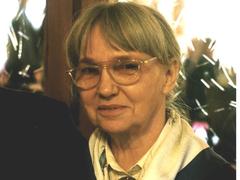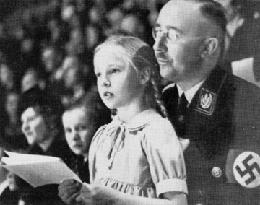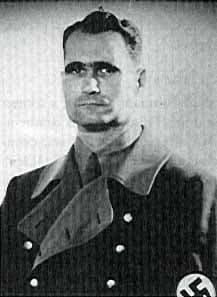
Stille Hilfe, or Silent Aid, has 25 to 40 members including Gudrun Burwitz, the daughter of Heinrich Himmler, head of the SS.
It is quietly working behind the scenes to stop the extradition to The Hague of Klaas Carel Faber, 88, wanted by Dutch authorities to resume a life sentence for the wartime murders of 22 Jews and resistance fighters.
And until his death a fortnight ago, Stille Hilfe was also bankrolling the legal bill for Samuel Kunz, 89, who was accused of taking part in the murders of 433,000 Jews in the Nazi extermination camp of Belzec in occupied Poland in World War II.
The group met at the weekend in a secret location in Munich, the birthplace of Nazism, to plot strategies for helping other surviving war criminal suspects still living in Germany.
Although legal, the organisation operates in a moral grey zone.
In Germany it is illegal to publicly praise Adolf Hitler or the Nazi party. But it is known that Stille Hilfe members are fanatically devoted to him and have made it their life’s work to provide a safe haven for his surviving followers.
Although just 25 to 40 people form the nucleus of the group, it has hundreds of anonymous supporters, many from within Germany‘s neo-Nazi scene, and consequently remains on the radar of the country‘s intelligence services.
A key member is the woman they refer to as the Nazi Princess, Himmler’s daughter Gudrun Burwitz
Ms Burwitz is now 81 but has devoted her life to both the memory of her father and aiding those who worked for him in death camps, in SS fighting units and in the administration of the terror apparatus that he oversaw.

There is one snapshot in particular that sums up her innocence and the defilement of it by her father and his cohorts. It was taken at the Nazi concentration camp of Dachau outside of Munich.
There, where close to 40,000 people were murdered during the 12 years the camp was in operation, Ms Burwitz is looked upon with adoration by her father and his SS servants. Yards away, people were beaten, starved, murdered and burned in the camp crematorium.
The child was not old enough at the time to know better. She is now, but she chooses to venerate her father and the men who served him.
She lives somewhere in the Munich suburb of Furstenried. Her phone number is unlisted, the house registered under the name of a building association.
Ms Burwitz is largely unseen. She devotes most of her life to a secret world, one that does not allow access to outsiders, especially journalists.
Oliver Schroem, author of a book about Stille Hilfe, has described her as a ‘dazzling Nazi princess, a deity among these believers in the old times’.
During its time the group has eased the way into society for many Nazi war criminals,. Including Klaus Barbie, the Gestapo Butcher of Lyon; Erich Priebke, SS murderer of Italian partisans; and Anton Malloth, brutal guard of the Theresienstadt concentration camp in the old Czechoslovakia.
Its first president, Helene Elizabeth, Princess von Isenburg, was chosen because of her good contacts among the aristocracy and conservative upper middle-class circles as well as the Catholic Church.
Within this secret world, Ms Burwitz is a revered figure. Carrying the blood of Himmler in her veins makes her almost a deity among the other members of Stille Hilfe.
For her, her greatest post-war coup was in organising the comfortable retirement of Anton Malloth. Malloth was a sadistic guard at the Theresienstadt concentration camp in Czechoslovakia who was sentenced to death in absentia by a Czech court.
Ms Burwitz used Stille Hilfe funds to rent a comfortable room for him in a 
Another person who she cared for in an OAP home in Stuttgart until his death earlier this year was Martin Sandberger, who led an elite killing squad responsible for the deaths of hundreds of thousands of Jews, Communists and gypsies in the occupied Baltic states of Latvia, Lithuania and Estonia.
German journalists who write about Stille Hilfe and its clandestine activities remark on the extraordinary power Ms Burwitz wields in the organisation.
Often quoted is the rally of neo-Nazis she attended in Ulrichsberg, northern Austria, several years ago where she made a rare appearance to be idolised by former SS veterans also in attendance.
‘They were terrified of her,’ said Andrea Ropke, a respected authority on neo-Nazism who attended the rally.
‘All these high-ranking former officers lined up and she asked, “Where did you serve?” showing off her vast knowledge of military logistics.’
When her father committed suicide in the Allied interrogation centre near Luneburg, on May 23, 1945, his daughter was distraught when told the news.
Ever since she has refused to believe it, claiming instead the British killed him.
Ms Burwitz does not deny her involvement with Stille Hilfe, describing herself in one of her rare interviews as simply one of the few members in a dying organisation.
‘It’s true I help where I can,’ she said. ‘But I refuse to discuss my work.’
By Sasha Dubronitz

